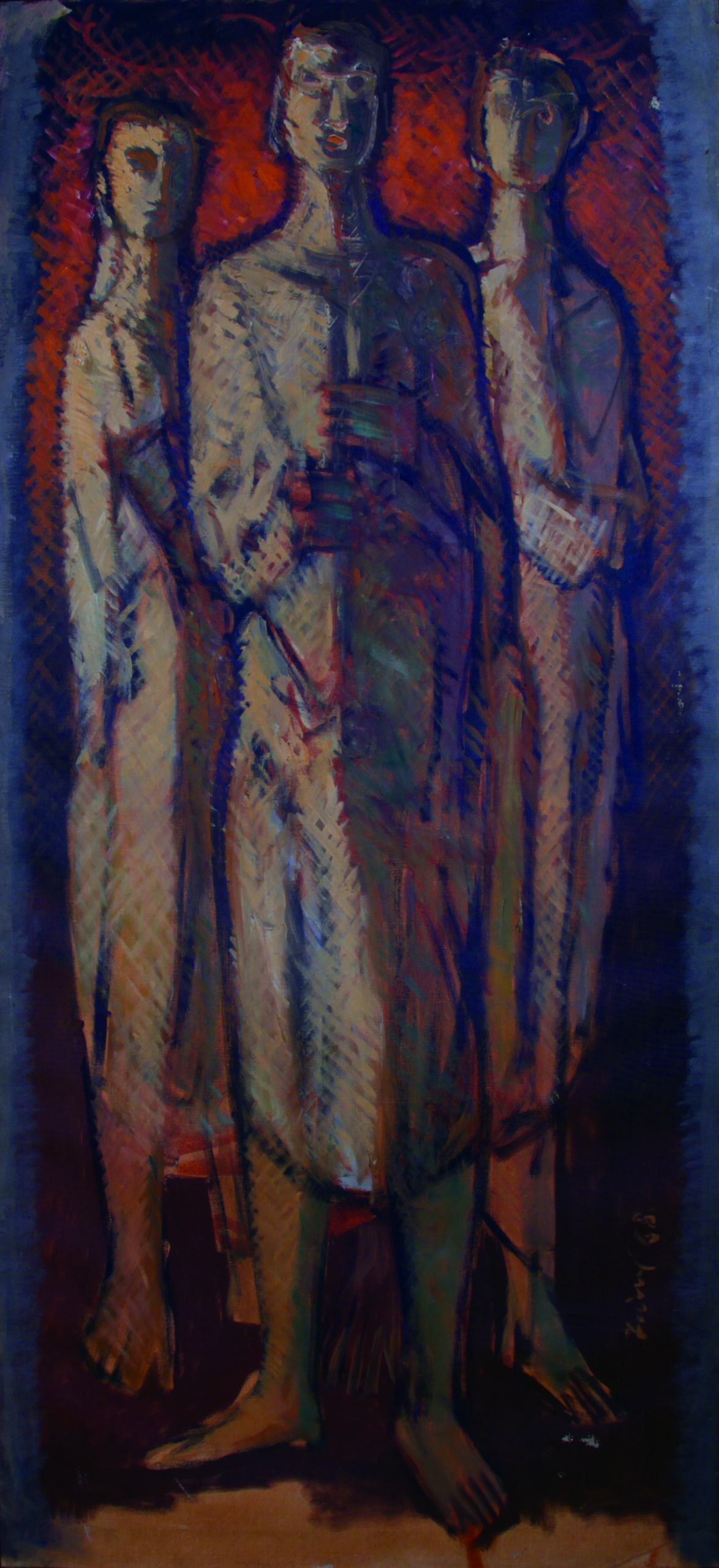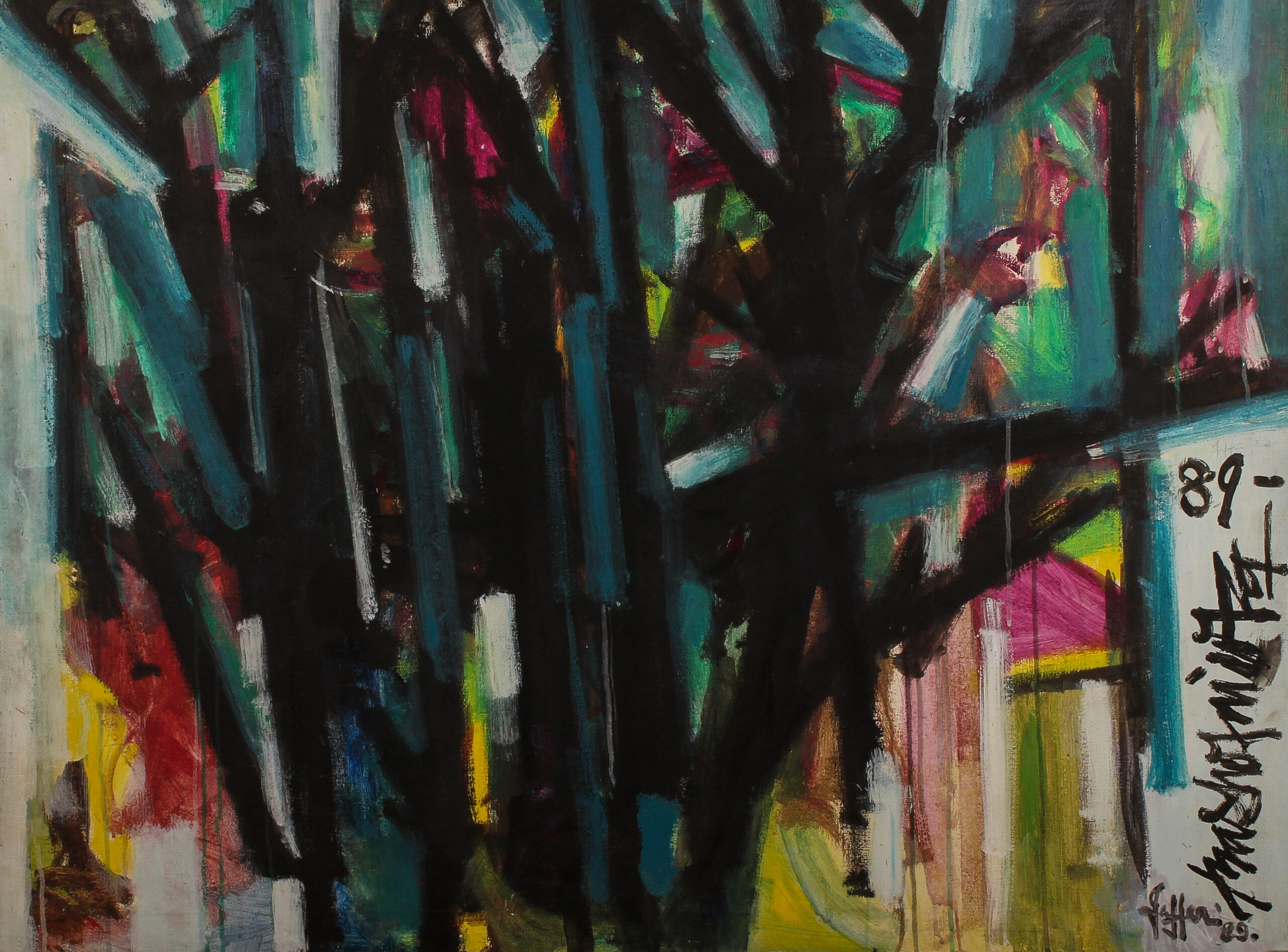Zainul Abedin
Bengali artist Abedin was born in Kishoregang, East Bengal in 1914. He studied at the Government School of Art in Calcutta (1933 – 1938) where he learnt the European and British style of art. After the Partition of India and Pakistan in 1947, he worked as chief designer in the Pakistan government’s Information and Publications Division,
and also became principal of the Institute of Fine Arts in Dhaka (later known as the Bangladesh College of Arts and Crafts), which he helped to found in 1948 and where he remained until 1967. An exhibition of his work in Lahore in 1953 became the starting-point for a series of exhibitions aimed at promoting contemporary Pakistani
art. Since Bangladesh became independent in 1971, he has been regarded as the founding figure of modern Bangladeshi art. His works embraced a variety of styles, from the realistic sketches of the Bengal famine to semi-abstract and abstract paintings. Examples are preserved in a number of collections including the Zainul Abedin Sangrahashala at Mymensingh, the Academy of Fine Arts in Calcutta and the Lahore Museum.


